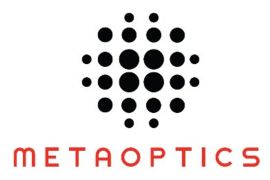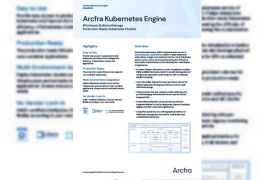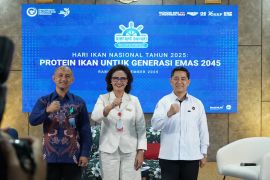In New Core Clinical Cohort Population Sub-Analysis of the TRITON-TIMI 38 Pivotal Study
INDIANAPOLIS and TOKYO, Aug. 16, 2011 (ANTARA/PRNewswire-AsiaNet) --
Analysis evaluated efficacy and safety among three patient sub-groups
A new post-hoc sub-analysis of an important set of patients from the TRITON-TIMI 38 study - those identified as the "core clinical cohort" population - showed that treatment with prasugrel (in combination with aspirin) was associated with a 26 percent relative risk reduction in the combined primary endpoint of cardiovascular death, myocardial infarction or stroke, compared to treatment with clopidogrel (8.3 percent vs. 11.0 percent, respectively, p<0.0001).(1) This corresponds to a 2.7 percent absolute risk reduction for patients treated with prasugrel. The results of this analysis, which also examined clinical outcomes in two other cohorts of patients who were treated for acute coronary syndromes (ACS) and underwent angioplasty with stenting, will help inform appropriate physician prescribing of prasugrel. These data were recently published online in the American Journal of Cardiology.(1)
For this analysis, investigators analyzed three patient clinical cohorts:
- The core clinical cohort: Patients who were under 75 years of age, weighed 60 kg or more and who had no prior history of stroke or transient ischemic attack (TIA). This group (n=10,804, 79 percent of all study subjects) excluded those patients considered to be at a higher risk for bleeding by the U.S. Food and Drug Administration (FDA) and the European Medicines Agency (EMA) in their regulatory approval of prasugrel and as outlined in prescribing labels for prasugrel tablets in these regions.(1)
- The non-core cohort: Patients 75 years of age or older or patients who weighed less than 60 kg, but without known prior stroke or TIA (n=2,149; 16 percent of study participants).(1) The use of prasugrel in patients greater than or equal to 75 years is generally not recommended. If, after a careful individual benefit/risk evaluation by the prescribing physician, treatment is deemed necessary in the patient age group greater than or equal to 75 years, then following a 60 mg loading dose, a reduced maintenance dose of 5 mg should be prescribed.(2)
- The third group were patients with a self-reported or known history of stroke or TIA prior to enrollment (n=518; 4 percent of study participants). Prasugrel is contraindicated in such patients.(1)
- Patients without known prior stroke but with missing baseline weight data were excluded from the analysis as it could not be determined to which final cohort they should be assigned to (n= 137; 1 percent of study participants).(1)
In the core clinical cohort, there were higher bleeding rates in prasugrel patients compared to clopidogrel patients.(1) Appropriate prescribing may help minimize a bleeding risk. Based on the post hoc analysis reported in this paper, in patients in the TRITON-TIMI 38 study who were younger than 75, heavier than 60 kg and with no prior stroke, the difference in the rates of certain types of bleeding (known as non-CABG TIMI major bleeding) was reduced, without adversely impacting the efficacy of prasugrel versus clopidogrel.
Relative bleeding rates were similar across the core and "non-core" groups. In the core group, the rate of TIMI major bleeding was 1.9 percent in prasugrel patients compared to 1.5 percent in clopidogrel patients, corresponding to a 0.4 percent absolute increase and a 24 percent relative increase in prasugrel patients (p= 0.17).(1) In the non-core group, the rate of TIMI major bleeding was 4.1 percent in prasugrel patients compared to 3.4 percent in clopidogrel patients, corresponding to a 0.7 percent absolute increase and a 23 percent relative increase in prasugrel patients (p= 0.40).(1) In both cases findings were not statistically significant.
The rate of TIMI major or minor bleeding was statistically significantly greater with prasugrel than clopidogrel in the core group (3.9 percent vs. 3.0 percent respectively, p=0.033), but not in the non-core group (9.8 percent prasugrel vs. 7.5 percent clopidogrel, p=0.08), although the relative increase in bleeding within these groups were similar.(1)
"This analysis showed that the use of prasugrel in a clinically identifiable population of ACS patients undergoing PCI in the TRITON-TIMI 38 trial significantly improved cardiovascular outcomes," said Stephen D Wiviott, M.D., at the TIMI Study Group, Cardiovascular Division, Brigham and Women's Hospital and Harvard Medical School, Boston, and lead author of the paper.(1)
The analysis found that in greater than or equal to 75 year old and low body weight (<60kg) patients (the non-core cohort), event rates were high in both treatment arms (15.3 vs. 16.3 percent, p=0.61, HR=0.94) compared to the core cohort group.(1) Patients taking prasugrel in the third group (described above) had non-favorable results with regard to both efficacy and safety compared to clopidogrel, with a higher rate of primary efficacy events (19.1 percent vs. 14.4 percent, p=0.15) driven by an increase in stroke and a higher rate of bleeding, including more intracranial hemorrhage (2.3 percent vs. 0 percent, p=0.02).(1) Prasugrel is contraindicated in patients who have had a prior transient ischemic attack (TIA) or stroke.
The TRITON-TIMI 38 trial was sponsored by Daiichi Sankyo Co., Ltd. and Eli Lilly and Company.
Study Methodology
TRITON-TIMI 38 was a head-to-head study comparing prasugrel (60-mg loading dose [LD], followed by a 10-mg once-daily maintenance dose) plus aspirin (ASA) with clopidogrel (300-mg LD, followed by a 75-mg once-daily maintenance dose) plus ASA in 13,608 patients with ACS managed with percutaneous coronary intervention (PCI), a procedure to open blockages in heart arteries, including the use of coronary stenting. The median duration of study treatment was 14.5 months.(3)
The primary endpoint of the study was the combined incidence of cardiovascular death, non-fatal heart attack or non-fatal stroke in patients followed for 6 - 15 months following PCI. The study showed that prasugrel taken with ASA had a 19 percent relative risk reduction of the combined endpoint of cardiovascular death, non-fatal heart attack or non-fatal stroke versus clopidogrel taken with ASA (9.9 percent vs. 12.1 percent respectively, p<0.001).(3) This corresponds to a 2.2 percent absolute risk reduction for ACS patients treated with prasugrel. In TRITON-TIMI 38, patients treated with prasugrel also experienced a 50 percent relative risk reduction (corresponding to 1.1 percent absolute risk reduction) in stent-related clots when compared with clopidogrel, regardless of stent type (1.1 percent vs. 2.4 percent respectively, p<0.001).(3) In TRITON, the risk of non-coronary artery bypass graft (non-CABG) major bleeding, including fatal bleeding, was higher with prasugrel (2.4 percent incidence) compared with clopidogrel (1.8 percent incidence) (p=0.03). The rate of TIMI major or minor bleeding was significantly greater with prasugrel than clopidogrel (5.0 percent vs. 3.8 percent respectively, p=0.002). The risk of coronary artery bypass graft (CABG) major bleeding, including fatal bleeding, was higher with prasugrel (13.4 percent incidence) than clopidogrel (3.2 percent incidence) (p<0.001).(3) In TRITON-TIMI 38, the loading dose of clopidogrel was delayed relative to the placebo-controlled trials that supported its approval for ACS.
Compared with the overall study population, a higher risk of serious bleeding among prasugrel patients was most evident in three distinct patient populations that are readily identifiable: patients who weighed less than 60 kg, patients who were 75 years of age or older and patients who have had a prior transient ischemic attack (TIA) or stroke.(3) A 5 mg maintenance dose should be used for patients who weigh less than 60 kg.(2) Prasugrel is generally not recommended for use in patients 75 years or older.(2) If, after a careful individual benefit/risk evaluation by the prescribing physician treatment is deemed necessary a 5 mg maintenance dose should be prescribed.(2) Patients with prior TIA or stroke should not be treated with prasugrel.(2)
In this study, survival analysis methods were used to compare outcomes by treatment assignment (prasugrel vs. clopidogrel) and to compare outcomes by whether subjects were included in the core clinical cohort, non-core cohort or contraindicated cohort. The principal limitation of this analysis is that the subgroups examined were identified in a post-hoc fashion.
Notes to Editors
About prasugrel
Daiichi Sankyo Company, Limited, and Eli Lilly and Company co-developed prasugrel, an oral antiplatelet agent discovered by Daiichi Sankyo and its Japanese research partner, Ube Industries, Ltd. Prasugrel helps keep blood platelets from clumping together and developing a blockage in an artery. The European Commission granted marketing authorization for prasugrel for the prevention of atherothrombotic events in patients with ACS undergoing PCI, in combination with ASA.(2) To date prasugrel has been approved in more than 65 countries worldwide.
About Acute Coronary Syndromes
Acute coronary syndrome includes heart attacks and unstable angina (chest pain). Coronary heart disease, which can result in ACS, is the single most common cause of death in the European Union, accounting for more than 741,000 deaths in the EU each year.(4) Acute coronary syndrome (ACS), which includes heart attack and type of chest pain called unstable angina, affects more than 1 million people in the United States annually.(5) The annual incidence of new heart attacks is estimated to be approximately 610,000 and about 325,000 people will have a recurrent attack.(5) Heart attack is a major manifestation of coronary heart disease, which occurs when the arteries become narrowed or clogged by cholesterol and fat deposits. In some cases the plaque can rupture, resulting in a blood clot, which may partially or totally block the blood supply to portions of the heart, resulting in ACS.(6) Many ACS patients undergo PCI to re-open the artery, which usually includes a stent placement.
About Daiichi Sankyo
The Daiichi Sankyo Group is dedicated to the creation and supply of innovative pharmaceutical products to address the diversified, unmet medical needs of patients in both mature and emerging markets. While maintaining its portfolio of marketed pharmaceuticals for hypertension, hyperlipidemia, and bacterial infections, the Group is engaged in the development of treatments for thrombotic disorders and focused on the discovery of novel oncology and cardiovascular-metabolic therapies. Furthermore, the Daiichi Sankyo Group has created a "Hybrid Business Model," which will respond to market and customer diversity and optimize growth opportunities across the value chain. For more information, please visit http://www.daiichisankyo.com.
About Eli Lilly and Company
Lilly, a leading innovation-driven corporation, is developing a growing portfolio of pharmaceutical products by applying the latest research from its own worldwide laboratories and from collaborations with eminent scientific organizations. Headquartered in Indianapolis, Ind., Lilly provides answers - through medicines and information - for some of the world's most urgent medical needs. Additional information about Lilly is available at http://www.lilly.com.
This press release contains certain forward-looking statements about prasugrel for the reduction of thrombotic cardiovascular events (including stent thrombosis) in patients with acute coronary syndromes who are managed with percutaneous coronary intervention and reflects Daiichi Sankyo's and Lilly's current beliefs. However, as with any pharmaceutical product, there are substantial risks and uncertainties in the process of development and commercialization. There is no guarantee that future study results and patient experience will be consistent with study findings to date or that the product will be commercially successful. For further discussion of these and other risks and uncertainties, see Lilly's filing with the United States Securities and Exchange Commission and Daiichi Sankyo's filings with the Tokyo Stock Exchange. Daiichi Sankyo and Lilly undertake no duty to update forward-looking statements.
Effient(R) is a registered trademark of Eli Lilly and Company.
(1) Wiviott, S.D. et al. Efficacy and Safety of Intensive Antiplatelet Therapy with Prasugrel from TRITON - TIMI 38 in a Core Clinical Cohort Defined by Worldwide Regulatory Agencies. The American Journal of Cardiology 2011. Published online 4 Aug 2011. Available at: http://www.ajconline.org/article/S0002-9149(11)01906-0/abstract. Accessed 8 July 2010.
(2) European Medicines Agency. Efient Summary of Product Characteristics. Electronic Medicines Compendium website.
(3) Wiviott, S.D. et al. Prasugrel versus Clopidogrel in Patients with Acute Coronary Syndromes. New England Journal of Medicine 2007 Vol 357 (20); 2001-2015.
(4) British Heart Foundation Health Promotion Research Group. European Cardiovascular Disease Statistics 2008. Accessed 8 July 2010.
(5) Roger VL, Go AS, Lloyd-Jones DM et al. for the American Heart Association Statistics Committee and Stroke Statistics Subcommittee. Heart disease and stroke statistics - 2011 update. Circulation. 2011;123:e1-e192.
(6) WebMD Medical Reference in Collaboration with the Cleveland Clinic. Heart Disease: Coronary Artery Disease. Accessed 8 July 2010.
(Logo: http://photos.prnewswire.com/prnh/20110329/DE73362LOGO )
SOURCE Eli Lilly and Company
CONTACT: Christina D. Gaines, APR, Eli Lilly and Company, +1-317-276-3845 (office), +1-317-366-2568 (cell), or Dr. Michaela Paudler-Debus, Daiichi Sankyo Europe GmbH, +49-(0)89-78 08 685 (office), +49-(0)172-845 8974 (cell), or Shigemichi Kondo, Daiichi Sankyo (Tokyo), +81-3-6225-1126 (office)
Editor: PR Wire
Copyright © ANTARA 2011











